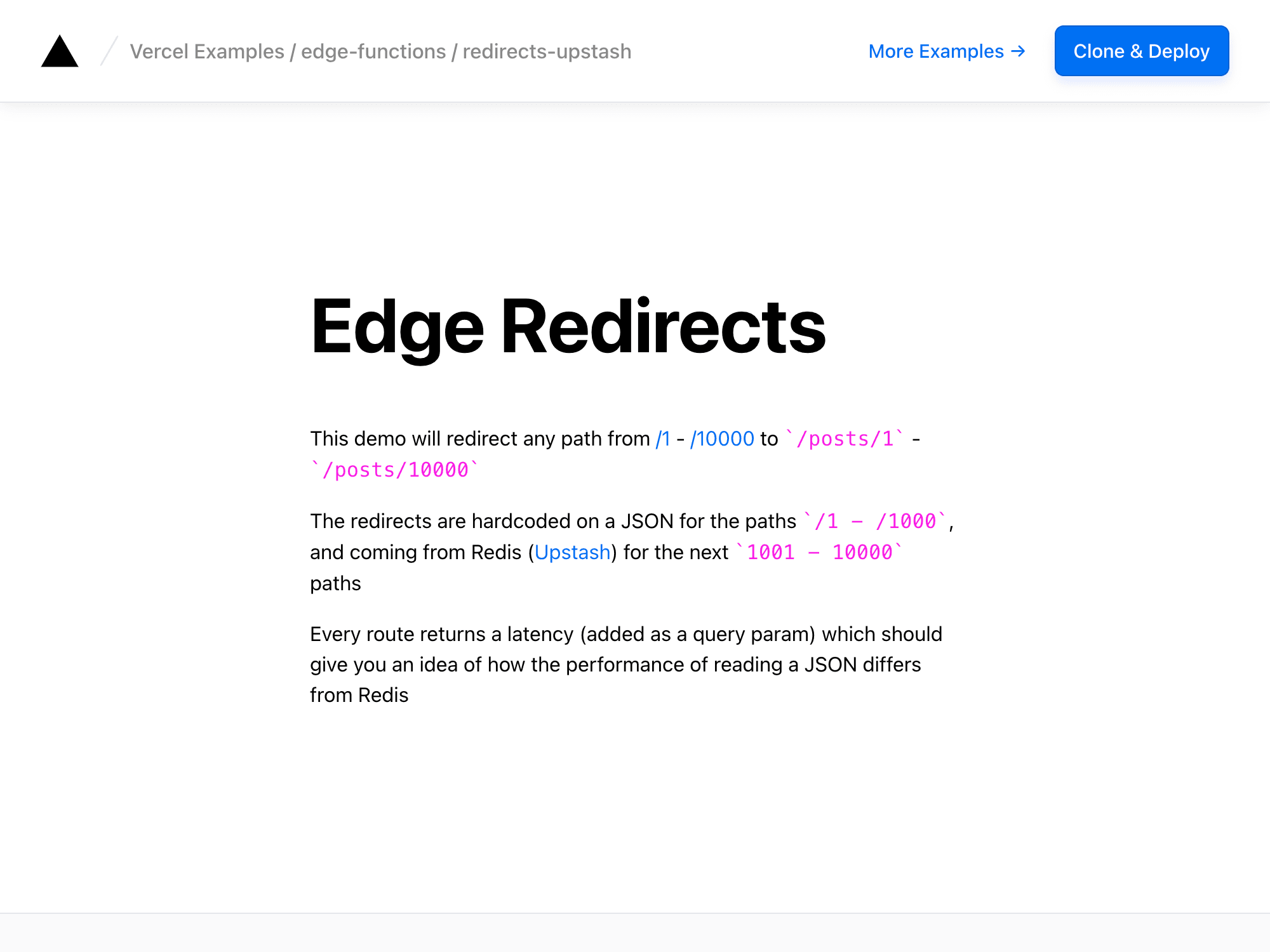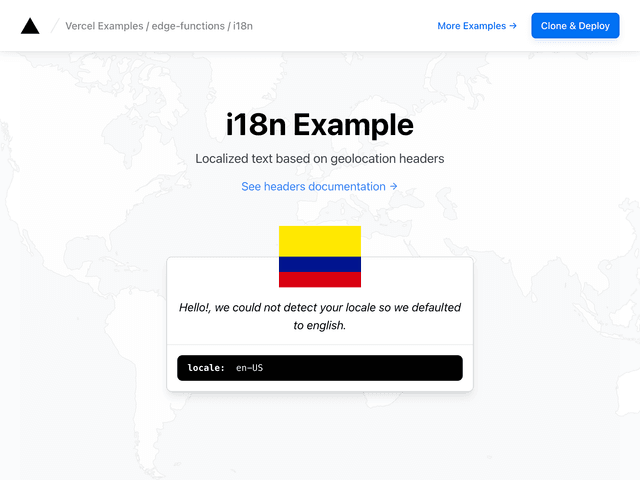
Edge Redirects with Upstash
This demo features a list of redirects, both hardcoded and coming from Redis (Upstash), that get evaluated at the edge.
The demo has a total of 10,000 redirects, 1,000 of which are hardcoded on a JSON file, and 9,000 added to Redis.
Redirects in a JSON file are faster to evaluate, but they can only be edited at build time, with Redis we can have editable redirects with a low latency cost.
Demo
https://edge-functions-redirects-upstash.vercel.app
How to Use
You can choose from one of the following two methods to use this repository:
One-Click Deploy
Deploy the example using Vercel:
Clone and Deploy
Execute create-next-app with npm or Yarn to bootstrap the example:
You'll need to have an account with Upstash. Once that's done, copy the .env.example file in this directory to .env.local (which will be ignored by Git):
Then open .env.local and set the environment variables to match the REST API and Edge API of your database. It should look like this:
We populate the redirects in Upstash in scripts/upstash.js using their REST API, if you prefer not to do that then set POPULATE_REDIS to false in .env. JSON redirects are also created there.
Next, run Next.js in development mode:
Deploy it to the cloud with Vercel (Documentation).
